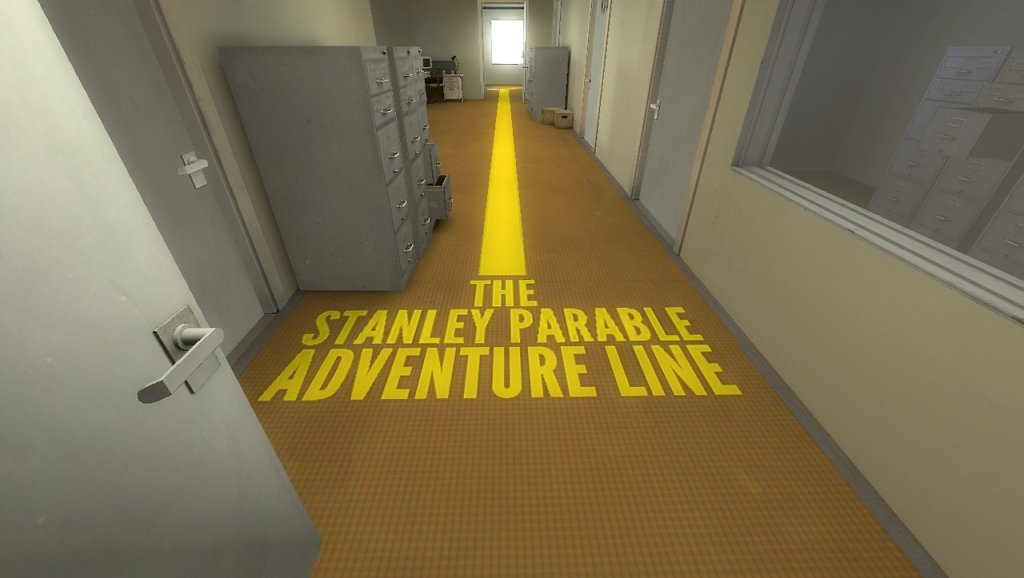“The Stanley Parable” Review
“The Stanley Parable” Adventure Line. From the game “The Stanley Parable” after sidetracking the Narrator multiple times.
November 1, 2013
“The Stanley Parable” is a narrative first-person exploration game where you follow a story, yet you are not following a story. You will have a choice, yet you do not have a choice. You will play a game, yet you will not play a game. The game will end, but really, the game will never end. Scoring a 90/100 on Metacritic, this Indie game based on an award-winning 2011 Source Engine Mod and developed and published by Galactic Cafe, can be defined as nothing else but “brilliant,” “humorous,” “unexplainable,” and “over-all good,” and with the narrative genius of Kevan Brighting, it is definitely worth your $15 on the Steam store.
Now hold up. If you haven’t yet played “The Stanley Parable,” I must urge you to read no further. The more blindly you jump into it, the better the game, and we don’t want to risk ruining anything for you. With that said, all you need to know is what is written above: it is good. Now maybe you know nothing about “The Stanley Parable” and have no intentions of ever playing it, but want to learn more about it, or perhaps you have already enjoyed the game and wish to see if I accurately describe the experience and agree with your opinion. Well then in those cases, read on.
In “The Stanley Parable,” you assume the role as Stanley, employee number 427 at a mysterious office complex. He works every day, staring at a monitor and fulfilling the orders that come to him via his computer. One day, Stanley notices that much time has passed, and he has received no orders from his monitor and everyone in the office has gone missing.In that moment, he is joined by the mysterious Narrative voice that guides him on his journey to discover what has happened. He has no weapons, there are no enemies, and Stanley’s jumping abilities have been disabled.
The Narrative voice remains nameless, but guides Stanley on his adventure by stating things such as, “Now this is important, Stanley walked through the door on the left.” All the while, there are be two doors open: one on the left, and one on the right. This is where Stanley (you) are offered the illusion of choice. Choosing the door the narrator originally told you to will continue the story, choosing the other door will cause the narrator to improvise on the story, and eventually ridicule you on your inability to adhere to simple instructions. At some points you can sidetrack the story so well, the Narrator will have no choice but to restart the game and impose the “Stanley Parable Adventure Line,” or rebuild the game in the image of Minecraft or Portal because he feels you are not enjoying his original game. In all actuality, the game is made of endings that depend on which combinations of instruction-following or ignoring you choose on your adventure. It is impossible to count the number of different endings, but each one brings you back to the beginning of the game, providing the concept of a “never-ending game.”
Throughout the game you never know if the Narrator is on your side. It’s up to you whether you will listen to him and discover the mysteries behind the empty office, or disregard the story and pursue your own adventure (most likely leading to your own demise or relentless ridicule). The game was created to make sense, it was made to fill your sense of exploration and adventure, all while providing some of the most humorous commentary in a game I’ve heard since Portal was released.












